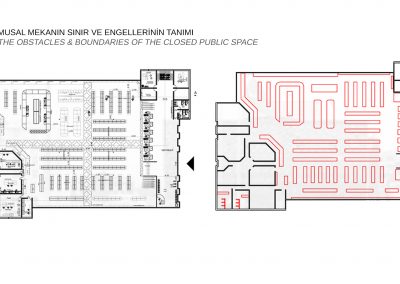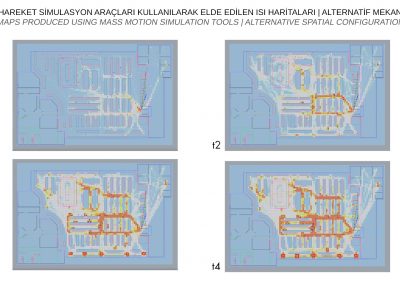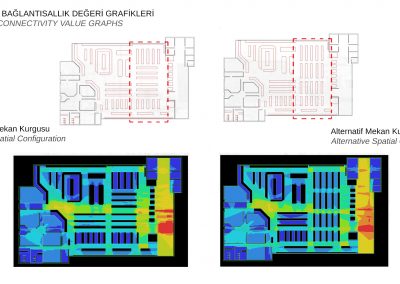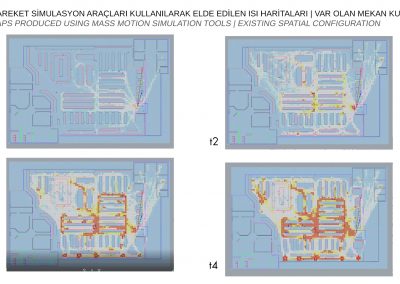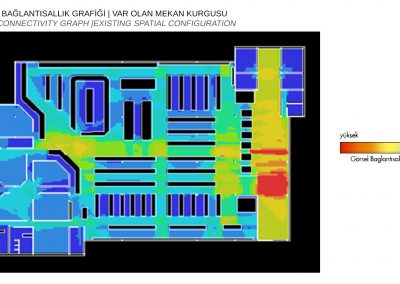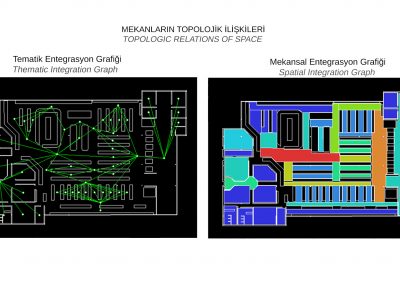Kamusal Mekânların Covid-19 Pandemisi’ne Karşı Dayanıklılığını Değerlendirme Modeli
Modern ve dayanıklı bir sosyal kent hayatının başlıca dinamiklerinden biri olan kamusal mekânlar ancak ve ancak canlılık hissiyatı, yeterlilik, erişilebilirlik ve kontrol gibi gereksinimleri karşılayabildikleri sürece aktif kent yaşantısının mekân ihtiyacına cevap verebilirler(Lynch,1981). Normal şartlarda, kamu erişiminin kesintisiz olarak kabul edildiği bu mekânların kullanımı, bugün yalnızca yeni normalle hayatımıza giren sosyal mesafe kuralının uygulanabilirliği ile bağıntılıdır. Bu bağlamda, pandemiye karşı dayanıklı, sağlıklı ve aynı zamanda sosyal kamusal mekânların kurgusu ancak sosyal mesafe kuralları gözetilerek yapılabilir ve ya var olan kamusal mekânlar ancak bu kapsamda değerlendirilerek yaşantısına devam edebilir.
Bu noktada önerilen değerlendirme modeli, günlük yaşantımızda ve pandemi koşullarında dahi vazgeçilemez olan temel ihtiyaçlarımızı karşıladığımız marketlerin, sosyal mesafe kuralları çerçevesinde pandemiye karşı dayanımını test etmek için geliştirilmiştir. İlk olarak Bill Hillier ve Julienne Hanson tarafından ‘The Social Logic of Space’ kitabında ortaya atılan ‘Space Syntax’ Türkçe karşılığı ile mekân sözdizimi teorisinin sunduğu görünürlük grafik analizleri ve kitle hareketi simülasyon araçlarının eş zamanlı kullanılarak elde edilen sonuçlar değerlendirilerek kapalı kamusal mekanların pandemiye karşı en dayanıksız noktalarının belirlenmesi hedeflenmiştir.
An Evaluation Model for the Resilience of Public Spaces during Covid-19 Pandemic
The public spaces which are essential for modern, resilient social urban life can only serve for the needs of the common ground as long as it contains vitality sensation, adequacy, accessibility and control (Lynch, 1981).However with the Covid-19 pandemic in 2020, humanity realized that the public spaces are not resilient enough to react the sudden changes and necessities. The public accessibility to those spaces in normal circumstances had taken granted, however today the use of the public spaces is only possible when it satisfies the needs of the new normal such as social distance. In this context, pandemic resilient healthy and at the same time social space can only exist with the space configurations made regarding the social distance concept or the evaluation of the existing ones according to the new rules of pandemic.
At this point the offered model proposes a pandemic resiliency evaluation for the public spaces that are the most essential and unavoidable for our daily routines such as supermarkets. The theory of Space Syntax first proposed by Bill Hillier and Julienne Hanson in the book called ‘The Social logic of Space’ offers a Visibility Graph Analysis (VGA) for evaluating how does visibility of space affect the user perception, therefore movement inside the space. Using the outcomes of the Visibility Graph Analysis with Pedsim Pro, a Grasshopper plug-in for Rhino for mass motion simulation, will give us to chance to elaborate the results and therefore determining the risky, non-resilient zones in those spaces in pandemic conditions.
© 2021 Istanbul Technical University Graduate School, Department of Informatics, Architectural Design Computing Program. All Rights Reserved
